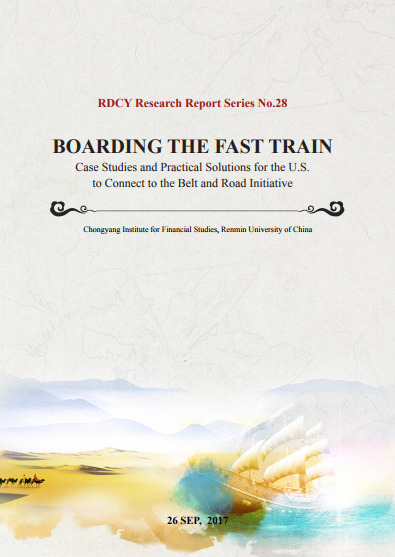Belt and Road
Your Present Location: PROGRAMS> Belt and RoadCase Studies and Practical Solutions for the U.S. to Connect to the Belt and Road Initiative

From May 14 to 15, 2017, the Belt and Road Forum for International Cooperation was successfully held in Beijing. This was a grand meeting for all parties to jointly discuss and build the Belt and Road(B&R), and to share the fruits of mutually beneficial cooperation. The delegation of the U.S. attended the meeting and expressed the will to align with the "The Belt and Road" Initiative.
The key point that the U.S. aligning with the B&R Initiative is concerned with how the U.S. should correctly understand the B&R Initiative and how to discover the advantages of China and the U.S., therefore to leverage the potentiality of complementary advantages. Chongyang Institute for Financial Studies, Renmin University of China launches this report, In order to help the U.S. understand the B&R opportunities better, Sino-U.S.cooperation. cases and ways to participate in this initiative, and to answer the major concerns of the U.S., then provides people from various sectors of the U.S. with decision-making reference and action guide. The following are the highlights of this report:
Envisage one historical opportunity--This report illustrates that the core spirit of the B&R Initiative as openness, inclusiveness, and sustainability will motivate the various sectors of the U.S. aligning with the B&R Initiative.
Clear two docking advantages--This report introduces that the U.S. enterprises have the advantage of cooperation in high value-added areas, in the meanwhile, the U.S. high-end service corporations and organizations represented by consulting industry will also make big achievements. Explain three major ways of participation--This report answers that the Financing Process of the Asian Infrastructure Investment Bank (AIIB),the specific ways of aligning for government and enterprises in the U.S. and the approaches for the U.S. Capital and the U.S. Talents to Join the B&R Initiative.
Focus on four Successful Examples—This report unscrambles how the four projects as Sino-U.S. Joint Clean Energy Projects in Africa, Fuyao Glass Industry Group, Industrial Zone and Huajian Model in Ethiopia and The Melaka Gateway Project in Malaysia develop the comparative advantages between China and the U.S..
Answer five major concerns—This report answers five common questions about the decision-making mechanism, financing and participation, resource allocation and risk management even RMB Internationalization, project implementation, project ownership and operation and maintenance. In particular, the action guidelines for the U.S. enterprises are also provided.
Key Words: RDCY; report; Belt and Road























































































 京公网安备 11010802037854号
京公网安备 11010802037854号





